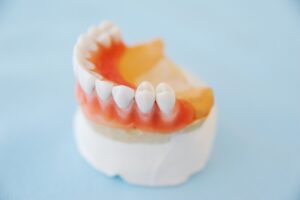 If you are missing a tooth, it is highly advisable to replace it as soon as possible. When you are down a tooth, your chewing is hindered which can cause you to lose out on nutrients while eating. Because of this reason and others, it is essential to fill the gap in your smile. A dental bridge is a great way to replace either a single tooth or a few that are adjacent to one another. In today’s blog, your Brighton, MA, dentists talk about the benefits of a dental bridge and the different types we can craft for your smile.
If you are missing a tooth, it is highly advisable to replace it as soon as possible. When you are down a tooth, your chewing is hindered which can cause you to lose out on nutrients while eating. Because of this reason and others, it is essential to fill the gap in your smile. A dental bridge is a great way to replace either a single tooth or a few that are adjacent to one another. In today’s blog, your Brighton, MA, dentists talk about the benefits of a dental bridge and the different types we can craft for your smile.
What Exactly Is A Dental Bridge?
A dental bridge is a prosthetic made from ceramic or porcelain and it fits in the gap left by the missing tooth. The false tooth, itself, is known as a pontic, and it is crafted to closely match your existing teeth. It is color-matched and shaped with precision, so it is virtually indistinguishable within your smile. Once you have a bridge placed, you won’t have to worry about taking it out, as you might with dentures, because it is supported in place by the adjacent teeth. It will allow you to chew and speak as normally as you once did, which is a significant quality of life improvement.
There Are Different Types
Because there are so many situations that warrant a dental bridge, there are different kinds that can accommodate a variety of issues. The most common bridge is called the traditional one, and it consists of two crowns being placed on either side of the missing tooth with the pontic situated between them. This is used when the patient has two existing teeth on either side of the gap.
If there are not two teeth on each side, your dentist may opt for the cantilever bridge. For this one, the pontic is attached to the end of the bridge rather than in the middle. A Maryland Bridge has metal or porcelain wings attached to either side of the pontic that are then attached to the existing teeth on either side. Finally, Implant-Supported Bridges are attached to implants rather than to natural teeth. This process is used when the existing teeth are not suitable enough to attach the prosthetic — even with a dental crown to strengthen them
Maintenance Is Easy
Because a bridge is designed to closely resemble your natural teeth, taking care of it is simple. You just need to brush it as you do your other teeth — paying mind to your gums to prevent any inflammation. Be sure to continue visiting your dentist for your regular checkups and cleanings, so they can ensure it is working as it should.
Contact Us To Learn More About Dental Bridges
If you have any questions about this helpful restorative procedure, please contact us today. Schedule a consultation by calling Brighton Family Dental Group in Brighton, MA, today at (617) 562-5210. We proudly welcome patients from Brookline, Newton, and all surrounding communities.









